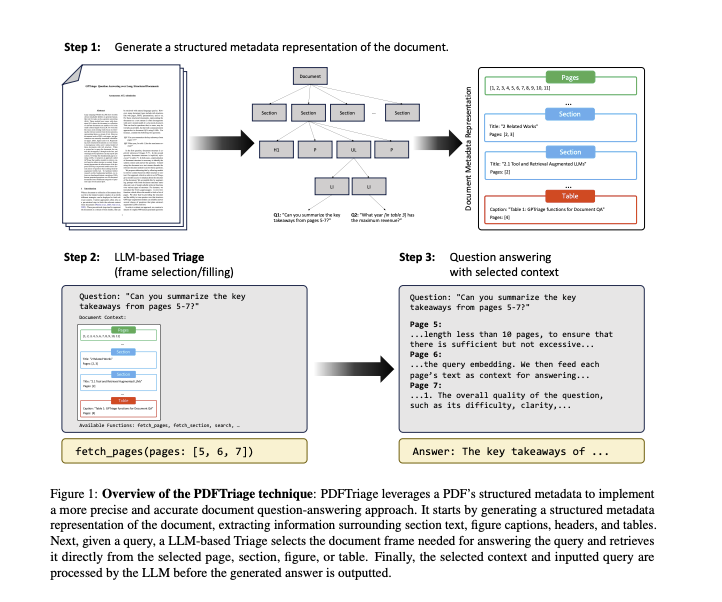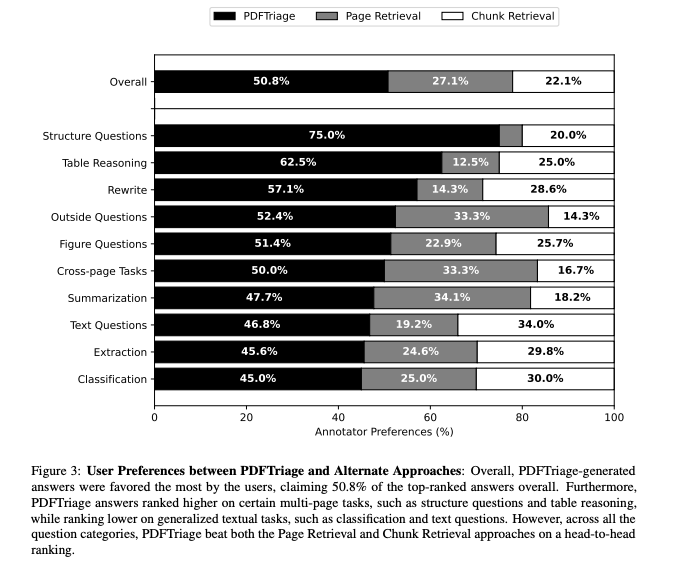In today’s digital world, getting information from structured documents like PDFs is important but can be hard. PDFTriage is a new solution that makes it easier to ask questions and get answers from long, structured documents. To learn more, read the research paper.

What is PDFTriage?
PDFTriage is a machine learning model that simplifies question answering for structured documents like PDFs. It can understand both the layout and the text in the document to give accurate answers.
How does PDFTriage work?
PDFTriage has two main parts:
-
Layout Comprehension: This part focuses on identifying and understanding the document’s layout. It recognizes elements like tables, figures, and sections of text.
-
Textual Analysis: After understanding the layout, this part analyzes the document’s text. It uses natural language processing to understand the text and answer questions based on it.
Why is PDFTriage important?
PDFTriage is a big step forward in getting information from structured documents. It solves problems that traditional methods struggle with, like complex layouts and different types of content. This makes it very useful for researchers, businesses, and anyone who needs to get detailed information from long documents.

Learn more about PDFTriage
If you want to know more about what PDFTriage can do, the original research paper has a detailed analysis of the model and how it works. It’s a must-read for anyone interested in the latest advances in machine learning and information extraction.
PDFTriage has the potential to make working with structured documents much easier and more efficient. By understanding both the layout and the text, it can provide accurate answers to questions, saving time and effort.
Some potential applications of PDFTriage include:
- Quickly finding specific information in long research papers or reports
- Extracting data from tables and figures in financial documents
- Answering questions about legal contracts or agreements
As more and more information is stored in structured documents, tools like PDFTriage will become increasingly valuable. By simplifying the process of question answering, PDFTriage opens up new possibilities for working with these types of documents.
To see PDFTriage in action, check out the demo in the original research paper. It shows how the model can accurately answer questions about a variety of different documents, from scientific papers to financial reports.
As research into machine learning and natural language processing continues to advance, we can expect to see even more powerful tools for working with structured documents in the future. PDFTriage is just the beginning of what’s possible in this exciting field.